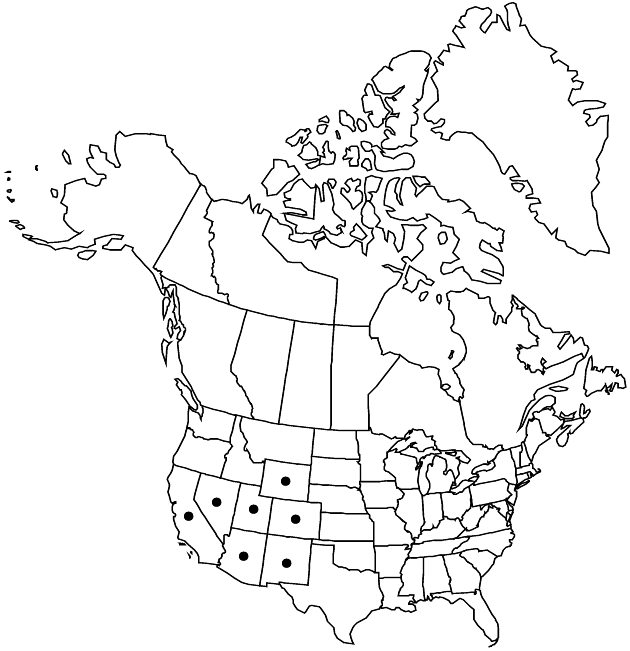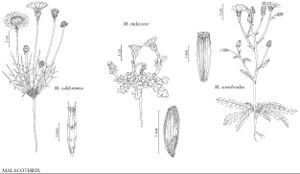Difference between revisions of "Malacothrix sonchoides"
Fl. N. Amer. 2: 486. 1843.
FNA>Volume Importer |
FNA>Volume Importer |
||
| Line 57: | Line 57: | ||
|publication year=1843 | |publication year=1843 | ||
|special status= | |special status= | ||
| − | |source xml=https://jpend@bitbucket.org/aafc-mbb/fna-data-curation.git/src/ | + | |source xml=https://jpend@bitbucket.org/aafc-mbb/fna-data-curation.git/src/f50eec43f223ca0e34566be0b046453a0960e173/coarse_grained_fna_xml/V19-20-21/V19_486.xml |
|tribe=Asteraceae tribe Cichorieae | |tribe=Asteraceae tribe Cichorieae | ||
|genus=Malacothrix | |genus=Malacothrix | ||
Revision as of 20:18, 16 December 2019
Annuals, (5–)10–25(–50) cm. Stems 1–5, ascending to erect, branched near bases and distally, usually glabrous (sometimes glaucous), rarely stipitate-glandular. Cauline leaves: proximal narrowly oblong to elliptic, pinnately lobed (lobes 3–8+ pairs, oblong to triangular, ± equal, apices obtuse to acute), ± fleshy, ultimate margins dentate to denticulate, faces glabrous; distal reduced (narrowly triangular to linear, bases ± dilated, ± clasping). Calyculi of 8–12+, ovate to lanceolate bractlets, hyaline margins 0.05–0.3(–0.7) mm wide, usually glabrous (margins sometimes stipitate-glandular). Involucres ± campanulate to hemispheric, 7–13 × 4–6(–12+) mm. Receptacles bristly. Florets 75–115; corollas lemon yellow, 10–14(–16) mm; outer ligules exserted 6–10(–13) mm. Cypselae ± cylindro-fusiform to prismatic, 1.8–3 mm, ribs extending to apices, ± equal or 5 more prominent than others; pappi persistent, crenate crowns of 15–25+, blunt or rounded teeth. Pollen 70–100% 3-porate. 2n = 14.
Phenology: Flowering Mar–Jun.
Habitat: Usually on dunes or in deep, fine sand in arroyos and on plains in Joshua tree woodlands, grasslands, Ephedra-Coleogyne associations
Elevation: 300–2100 m
Distribution

Ariz., Calif., Colo., Nev., N.Mex., Utah, Wyo.
Discussion
Malacothrix sonchoides grows in California in the Mojave Desert (Los Angeles, Kern, San Bernardino, and Riverside counties), the Great Basin Desert (Inyo Mountains), and barely enters the northern margins of the Sonoran Desert. It also grows in the Intermountain Region in Arizona, Colorado, Nevada, New Mexico, Utah, and Wyoming.
Selected References
None.
